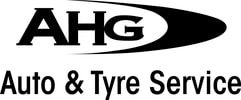Let’s break down what the Subaru secondary air pump does. It’s a key part of the Secondary Air Injection (SAI) system, which is an emissions control device.
Here’s its main purpose and how it works:
- Reduces Emissions During Cold Starts: When you start your Subaru cold, the engine runs “rich” (with extra fuel) to ensure smooth operation until it warms up. This rich mixture results in higher levels of unburnt hydrocarbons (HC) and carbon monoxide (CO) – both pollutants – in the exhaust gas. The catalytic converter, which normally cleans up these pollutants, isn’t effective until it reaches a high operating temperature.
- Injects Fresh Air: The secondary air pump’s job is to pump fresh, oxygen-rich air from the outside directly into the exhaust manifold(s) or sometimes just upstream of the catalytic converter.
- Promotes Oxidation: This injection of oxygen into the hot exhaust stream causes the unburnt HC and CO to undergo further combustion (oxidation) before they reach the catalytic converter. This reaction turns them into less harmful substances like carbon dioxide (CO₂) and water vapor (H₂O).
- Heats the Catalytic Converter Faster: The oxidation process described above is exothermic, meaning it generates heat. This extra heat in the exhaust helps the catalytic converter warm up to its effective operating temperature much more quickly.
- Short Operating Window: The secondary air pump and the entire SAI system typically only operate for a short period after a cold start, usually ranging from 30 seconds to about 90 seconds, depending on the model and conditions. Once the engine and catalytic converter are sufficiently warm, the system shuts off as it’s no longer needed and could interfere with the normal closed-loop fuel control managed by the oxygen sensors.
In summary, the Subaru secondary air pump is an emissions control component designed to reduce harmful pollutants during the critical cold start phase by injecting air into the exhaust. This helps burn off excess fuel byproducts and speeds up the catalytic converter’s warm-up time, allowing the vehicle to meet stringent emissions regulations.
Failure of this system (often the pump itself or the associated valves) is a common reason for a Check Engine Light in many Subaru models, particularly from the mid-2000s onwards.
Contents
- How do I know if my air pump is bad?
- What are the symptoms of a bad secondary air injection pump?
- What activates a secondary air pump?
- What does secondary air pressure do?
- How do you know if your secondary air pump is working?
- What happens when the secondary air pump goes bad?
- How long does a secondary air pump last?
- What is the purpose of a secondary air pump?
- What is the difference between primary and secondary air pressure?
- Can a car run without a secondary air pump?
How do I know if my air pump is bad?
The most obvious sign of a broken air pump is a lack of air flow or pressure. If the pump is not producing any air at all, then it is likely that the pump is broken and needs to be repaired or replaced.
What are the symptoms of a bad secondary air injection pump?
Potential complaints:
- Secondary air pump does not start after a cold start.
- The engine compartment smells charred.
- Melting traces on the electrical contacts of the secondary air pump.
- P0410 “Malfunction”
What activates a secondary air pump?
Secondary-air valves are either actuated by a vacuum controlled by a solenoid switching valve or open in response to the pressure of the secondary-air pump. With more recent generations, the shut-off and non-return functions are combined in one single “secondary-air valve”.
What does secondary air pressure do?
Secondary air injection (commonly known as air injection) is a vehicle emissions control strategy introduced in 1966, wherein fresh air is injected into the exhaust stream to allow for a fuller secondary combustion of exhaust gases.
How do you know if your secondary air pump is working?
A fault in the secondary air system can usually be identified by a scratching or whistling noise, or by the secondary air pump no longer working. For vehicles with OBD, a diagnostic trouble code may also be saved in the engine control unit.
What happens when the secondary air pump goes bad?
Emissions Test Failed
The secondary air injection pump decreases the amount of hydrocarbons in your emissions system; hence, if it goes bad then the emission system will release more hydrocarbons into the atmosphere. Besides, the emission test will also appear failed due to the bad secondary air pump.
How long does a secondary air pump last?
As a result, the secondary air pump was energised for an impermissibly long period of time. During a cold start, the secondary air pump may only be in operation for a maximum of 90 – 120 seconds. The secondary air pump is not designed for continuous use!
What is the purpose of a secondary air pump?
The Secondary Air Injection System (SAIS) is part of a vehicle’s exhaust system. Manufacturers began introducing it in the 1960s to help reduce hydrocarbon and carbon monoxide emissions, both of which resulted from incomplete combustion.
What is the difference between primary and secondary air pressure?
Primary air: Air supplied to the burner with the fuel that controls the rate of combustion as well as the amount of fuel that can be burned. It is usually mixed with the fuel and then ignited. Secondary: Air supplied to the combustion process that controls combustion efficiency; How completely the fuel is burned.
Can a car run without a secondary air pump?
Which begs the question: Does a car need a secondary air injection system to run? Strictly speaking, no, it doesn’t. If your car doesn’t have a smog pump, a couple things can happen.

